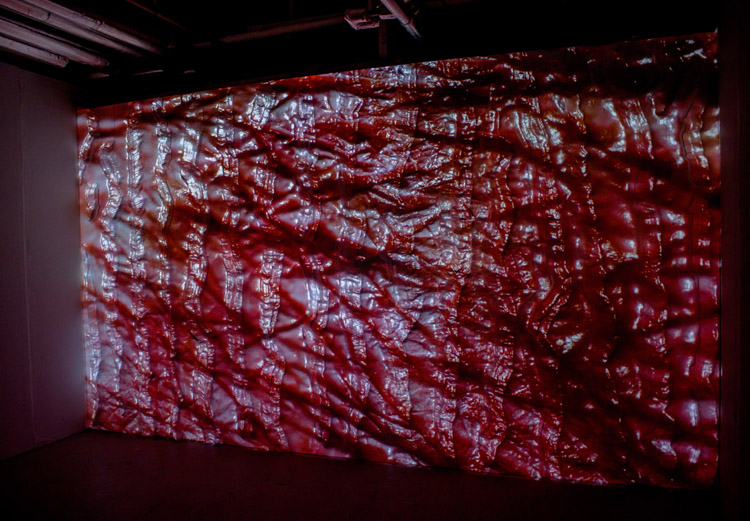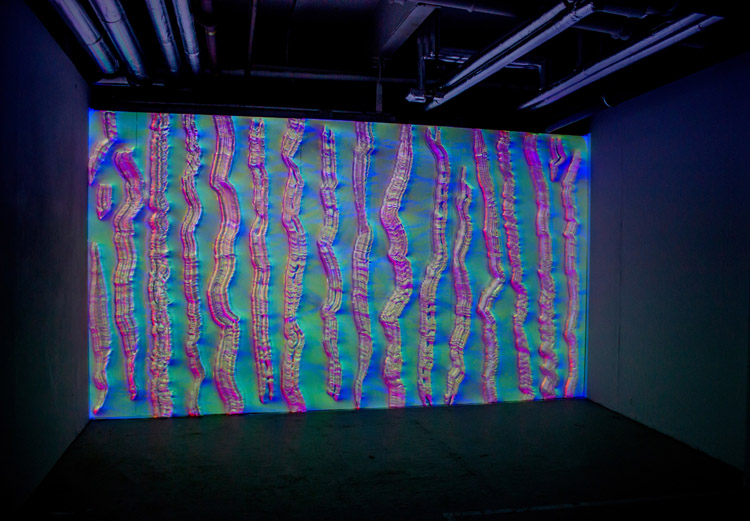Words by Ana Sancho

Technology is evolving fast, and we can only wonder whether we are able to adapt quickly or predict the implications of its exponential growth in our lives. We live in a world that is endlessly producing and consuming all kinds of images, but we might not be aware of how the digital age is affecting us.
Digital and visual artist Henry Driver aspires to create a debate around the ethical consequences of rapidly changing technology and how it shapes our lives. He is one of the five artists selected for alt.barbican, the new accelerator program for artists working at the intersection of art and technology launched by Barbican in partnership with The Trampery. The theme of this innovative program is “the subversion of reality”, a subject matter in which Driver’s artistic purposes fit soundly.
In his project Second Skin (2016), Driver explores the boundaries between the real and the virtual through an augmented reality installation where he mixes virtual and physical elements. Built by projection mapping onto sculptures, it creates a simulated skin and casts doubt on the perception of ourselves as hybrid digital/physical entities.
Most recent projects of Driver include Mimic (2017), a hybrid reality made of distorted 3D CGI animations of a now abandoned shoe factory, St Mary’s Works, in Norwich, and On Screen (2017), a live interactive video installation that explores surveillance and the duality between security and privacy. By overlapping the audience’s movements into the live video, Driver reflects the dullness of being constantly watched and monitoring our everyday actions.
With every visual experience, Driver brings up the possibility and the consequences of merging digital and physical worlds and makes us question where do we draw the increasingly blurred line between these two worlds in our everyday lives.

For those that are not familiar with your work, could you tell us what drew you to work into the intersection between art and technology? What are your aims as an artist working between technology and art?
I am fascinated by the speed at which technology is developing, shaping and increasingly dominating our lives, leading to the collision and blurring of virtual and physical worlds. New technology is being developed and immersed into our lives at such a staggering rate that it’s incredibly difficult for us to understand the effects truly. My aim is to communicate and critique the issues, ethics and effects that technology causes.
alt.barbican is an arts accelerator launched by the Barbican in collaboration with The Trampery. Practitioners and artists that applied to the programme were all asked to respond to the theme of ‘the subversion of reality’. Could you tell us a little bit about your proposal and the intellectual process behind?
Throughout our daily lives, we are continuously confronted with and communicating through imagery. Be it through media or via interaction with social media; there is an intense saturation. However, these images are not real, accurate or truthful but digitally mass manipulated or entirely simulated, as demonstrated most dramatically in the fashion industry. Images are majorly retouched, with the bodies and figures of the models being completely digitally remoulded and reshaped; from this, a new non-existent digital entity arises.
However, research shows that we view, judge and define our perceptions based on these non-existent, unattainable forms. Recent research demonstrates that the public are no longer able to differentiate between computer generated imagery and photography and this, combined with MIT’s development of hyperreal artificial skin which has the ability to dramatically change the user’s features and perceived age, suggests the boundaries between real and the virtual are completely blurred.
I am intrigued by how these developments affect our ability to differentiate between virtual and real and the effect this has on the perception and depiction of our bodies, both online and offline. I am interested in how this affects what is defined as natural/artificial and what future body aesthetics or post-human developments could arise from this.
My recent project Second Skin responds to this, utilising complex projection mapping of CGI replicas onto sculpture to create a hybrid virtual/physical experience, where the boundaries between the virtual and physical constantly blur. Throughout alt.barbican, I will be researching and developing new responses to these themes.
What impact do you think the residency is going to have on the way you approach the art form?
I believe the residency is already impacting my practice and expanding how I work. The artists selected for alt.barbican all have such exciting and diverse practices, ranging from wearable tech, sonic art, and hybrid CGI/film to social media and internet art. It has been really inspiring discussing and viewing their work. This, in combination with the eclectic selection of talks and lectures we have received, has really been expanding how I might work and approach my practice in future.
What’s your chief enemy of creativity?
Comfortable complacency, admin, time, money.
You couldn’t live without…
MacBook and water.






